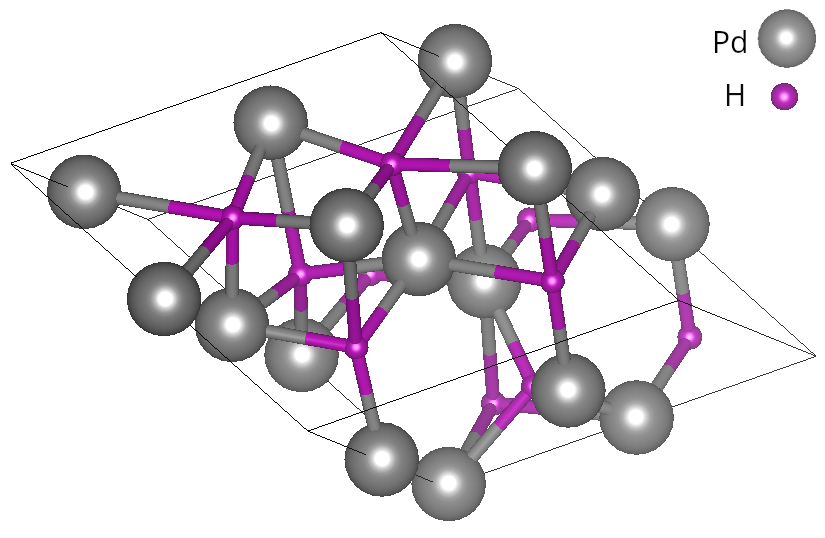
The paper shows that the occupation of tetrahedral interstitial sites is possible in metastable states, but it suppresses superconductivity.
Palladium hydrides are one of the rare examples of superconducting hydrides at ambient pressure, exhibiting a critical temperature of 10 K in its equilibrium structure with hydrogen atoms occupying octahedral interstitial sites of the palladium fcc lattice. Recently Syed et al. in an unconfirmed paper have claimed that metastable states with H atoms in tetrahedral sites can be synthesized with a fast cooling technique and that they can yield much higher critical temperatures, reaching even 50 K at ambient conditions. This experimental discovery would show that hydrogen-based superconductors can be high-temperature superconductors also at ambient pressure.
Making use of ab initio calculations considering quantum anharmonic lattice effects, we show that full or partial occupation of tetrahedral sites is possible in metastable structures. This is in line with recent neutron scattering experiments that have detected H atoms in tetrahedral sites. However, our calculations show that the superconducting critical temperature of these metastable structures with hydrogen atoms in tetrahedral sites is lower than the one of the equilibrium structure with full octahedral occupation. We thus question the results obtained by Syed et al. demonstrating that the tetrahedral interstitial sites occupation of hydrogen does not increase the critical temperature, it suppresses it.
Reference: Physical Review B 107, 024504 (2023)